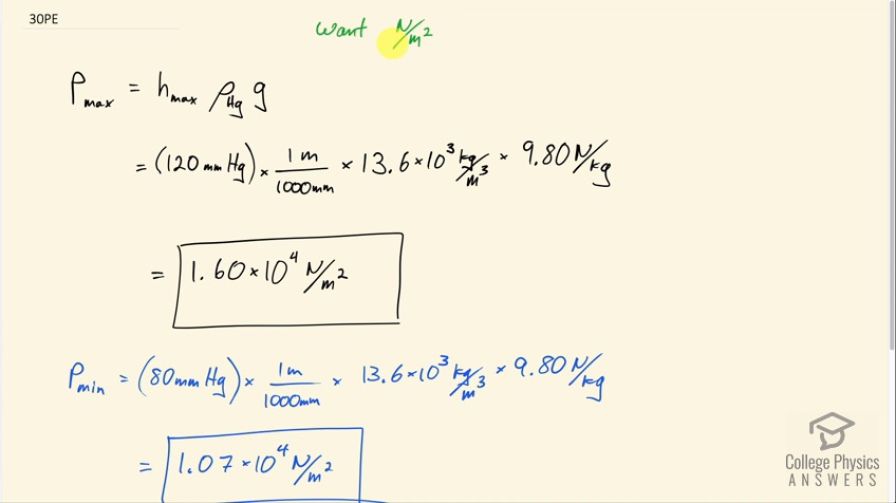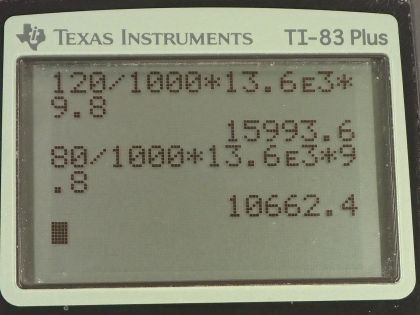Question
(a) Convert normal blood pressure readings of 120 over 80 mm Hg to newtons per meter squared using the relationship for pressure due to the weight of a fluid () rather than a conversion factor. (b) Discuss why
blood pressures for an infant could be smaller than those for an adult. Specifically, consider the smaller height to which blood must be pumped.
Final Answer
-
- Since an infant is shorter the height of the column of blood in their body is shorter than that of an adult. This means the heart of an infant doesn't need to create as much pressure to make blood reach their head while standing.
Solution video
OpenStax College Physics for AP® Courses, Chapter 11, Problem 30 (Problems & Exercises)

vote with a rating of
votes with an average rating of
.
Calculator Screenshots
Video Transcript
This is College Physics Answers with Shaun Dychko. We want to know what typical blood pressure is in units of newtons per square meter and we are given the pressure in millimeters of mercury (Hg). So the pressure is 120 mm Hg for a maximum and then low pressure is 80 mm Hg. So the pressure is the height of this column of mercury multiplied by mercury's density times gravitational field strength, g. So that's 120 mm Hg which we have to convert into meters because we want newtons per meter squared so we'll multiply by 1 meter for every 1000 millimeters then we have times 13.6 times 10 to the 3 kilograms per cubic meter which is something we looked up in this table [11.1] and it says mercury is 13.6 times 10 to the 3 kilograms per cubic meter. Then multiply by 9.80 newtons per kilogram and that's 1.60 times 10 to the 4 newtons per square meter. The minimum pressure from the heart is 80 mm Hg multiplied by the same factors giving 1.07 times 10 to the 4 newtons per square meter.

